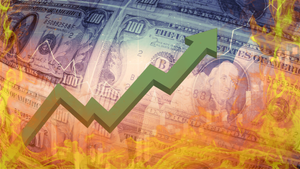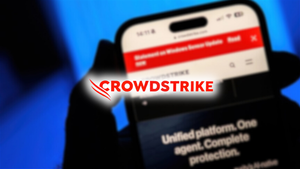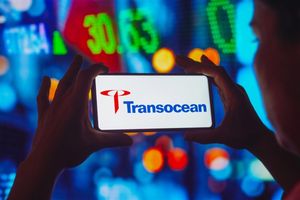
A company that generates cash isn’t automatically a winner. Some businesses stockpile cash but fail to reinvest wisely, limiting their ability to expand.
Luckily for you, we built StockStory to help you separate the good from the bad. Keeping that in mind, here are three cash-producing companies to steer clear of and a few better alternatives.
Jamf (JAMF)
Trailing 12-Month Free Cash Flow Margin: 6.4%
Founded in 2002 by Zach Halmstad and Chip Pearson, right around the time when Apple began to dominate the personal computing market, Jamf (NASDAQ: JAMF) provides software for companies to manage Apple devices such as Macs, iPads, and iPhones.
Why Are We Wary of JAMF?
- Sales trends were unexciting over the last three years as its 17.7% annual growth was below the typical software company
- Products, pricing, or go-to-market strategy may need some adjustments as its 8.9% average billings growth over the last year was weak
- Poor expense management has led to operating losses
Jamf is trading at $11.67 per share, or 2.3x forward price-to-sales. If you’re considering JAMF for your portfolio, see our FREE research report to learn more.
Progyny (PGNY)
Trailing 12-Month Free Cash Flow Margin: 16.1%
Pioneering a data-driven approach to family building that has achieved an industry-leading patient satisfaction score of +80, Progyny (NASDAQ: PGNY) provides comprehensive fertility and family building benefits solutions to employers, helping employees access quality fertility treatments and support services.
Why Do We Think Twice About PGNY?
- Smaller revenue base of $1.21 billion means it hasn’t achieved the economies of scale that some industry juggernauts enjoy
- Estimated sales growth of 3.1% for the next 12 months implies demand will slow from its two-year trend
- Negative returns on capital show management lost money while trying to expand the business
Progyny’s stock price of $22.71 implies a valuation ratio of 13.3x forward P/E. Read our free research report to see why you should think twice about including PGNY in your portfolio.
Robert Half (RHI)
Trailing 12-Month Free Cash Flow Margin: 5.5%
With roots dating back to 1948 as the first specialized recruiting firm for accounting and finance professionals, Robert Half (NYSE: RHI) provides specialized talent solutions and business consulting services, connecting skilled professionals with companies across various fields.
Why Should You Sell RHI?
- Products and services are facing significant end-market challenges during this cycle as sales have declined by 1.5% annually over the last five years
- Earnings per share decreased by more than its revenue over the last five years, showing each sale was less profitable
- Shrinking returns on capital suggest that increasing competition is eating into the company’s profitability
At $47.33 per share, Robert Half trades at 17.6x forward P/E. To fully understand why you should be careful with RHI, check out our full research report (it’s free).
High-Quality Stocks for All Market Conditions
Market indices reached historic highs following Donald Trump’s presidential victory in November 2024, but the outlook for 2025 is clouded by new trade policies that could impact business confidence and growth.
While this has caused many investors to adopt a "fearful" wait-and-see approach, we’re leaning into our best ideas that can grow regardless of the political or macroeconomic climate. Take advantage of Mr. Market by checking out our Top 5 Strong Momentum Stocks for this week. This is a curated list of our High Quality stocks that have generated a market-beating return of 176% over the last five years.
Stocks that made our list in 2020 include now familiar names such as Nvidia (+1,545% between March 2020 and March 2025) as well as under-the-radar businesses like the once-micro-cap company Kadant (+351% five-year return). Find your next big winner with StockStory today for free.





